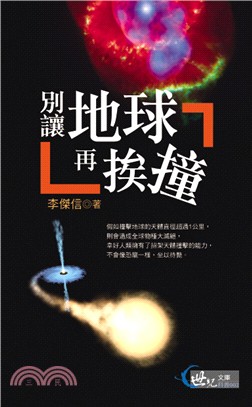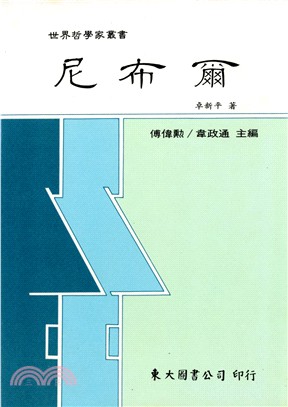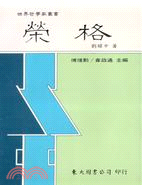再享89折,單本省下261元
商品簡介
If human life is like a special, unusual, significant and far-reaching key, every morning when you wake up to take it, you have to fill out the application form carefully and seriously, without being meticulous.
Before going to sleep at night, thank God for today's gift and return the key to life with gratitude.
If we have used the key of life thousands of times, over and over again, then why do we have to do as Sisyphus did, with great effort, to push a boulder up a mountain?
After pushing a boulder up to the top of the mountain, we let it roll back down again, and so on, day after day, applying and repeating forever. ......
Imagine when we return the key to life, do we take an introspective attitude and examine our life deeply: what have we achieved today? What have we failed?
So one cannot help but ask: which direction should we choose for the existence of the universe and life itself, and what lifestyle should we adopt?
What is the value of the existence of life itself, and what is the true meaning of the existence of life itself?
What if the days of our existence in the universe, in life itself, always begin under such hard-won circumstances?
If our cosmic life existence, our existence itself, has always started in such a hard way and ended in such a sad way, then we must have a deeper self-awareness and reflection on our cosmic life existence, our existence itself.
Therefore, the question of life and death will again become a sharp and sensitive issue.
The Eastern and Western philosophies of life have, for ages, attempted to unravel the mystery of life and death in the existence of everything in the universe itself, in order to understand the true meaning of the existence of the world around us.
They attribute life to the simple "existence" that distinguishes between animals and inanimate things, and to the "mind" that is uniquely human.
It even goes on to use the phenomena that differentiate everything from one generation to another and the various theories that explain these phenomena, in order to decipher the existence of life in the universe.
To decipher the knowledge and culture inherent in the existence of life in the universe. It serves the purpose of the existence and evolution of a certain kind of being itself.
However, "mind" is a sum of the ability to realize the motive by the biological reaction of people through the precipitation and storage of known things.
It is the sum of all the thinking abilities to feel, observe, understand, judge, choose, remember, imagine, hypothesize, and reason, and then to guide their behavior according to it.
Thus, 'mind' covers the 'philosophical' level: the accumulation and storage of the known (subconscious); combined with the 'biological' (consciousness) level of brain information processing, that is, 'physiological response'.
The "mental" activity that engages in the conscious effort to achieve a certain ideal or purpose, thus consciously defining the purpose, is applied to the mental state.
However, the "mind" that can understand its own mental state and that of the human beings around it occurs mostly in the subconscious, and human beings can only receive the perceptible form of the combined manifestation of external feelings through the "senses.
The imagination compares and categorizes the perceptible forms, and the similar perceptible forms are grouped into one impression, and the perceptible forms begin to appear.
This assertion is in fact a statement of a very important fact, that although man has the ability to be autonomous, to master himself and to realize his own existence, he is the only one who is able to do so by reason.
In other words, man is the only being who exists in the way of rational "being", but the human brain does not automatically produce consciousness.
Consciousness is formed only when objective things are reflected to the human brain and processed by the human brain.
In other words, the attempt to uncover the true meaning of the existence of the universe and life itself is a constant and unchanging opportunity to establish the inner reality of the self.
If one does not seek deeper into one's own consciousness to establish an inner reality that one can grasp and that is hidden in one's heart.
Then, the inquiry into the existence of life in the universe, the true meaning of existence itself, will only be transformed into the pursuit toward the existence of things outside of the body, but not in the establishment of the inner value of the human self.
Therefore, the existence of life itself can only be grasped by consciousness through inner experience and intuitive methods.
The external factor can only work by revealing the substance of what is hidden inside things to all objects or phenomena that exist objectively in nature.
Reason can only grasp what is static enough to understand natural phenomena, but it cannot grasp the universe, human nature, or human spiritual culture.
Therefore, it is necessary to give prominence to will, emotion, and intuition in the field of philosophy of life and psychiatry in order to avoid the negation of humanity, personality, and freedom of will.
And in Leibovich's post-Nietzschean philosophy, it is from the radical aesthetics of the Stefan Georges school to the "life" phenomenon of existence itself as a whole, the existence of the universe life life itself.
The existence of life itself is always the core of the philosophy of life, and the existence of life itself is always the core problem of all cosmic life and life itself.
To sum up, if we can examine life deeply with a reflective attitude, and see things with wisdom, and look at the universe and the world quietly.
We will easily find that the inquiry of natural science in Western culture can be explained by the universal law of cause and effect; the study of psychiatry is the understanding and experience of the meaning of the existence of life.
Arthur Schopenhauer (1788~1860) and Friedrich Nietzsche (1844~1900) opposed the suppression and alienation of human emotions by rationalism and mechanism, and affirmed the importance of the "will to live" (Wille zum Leben).
Since human consciousness is not under the impact of rational control and flows freely like water, existentialist philosophers of life, such as Socrates, Plato, ...... Kierkegaard, Schopenhauer, Hegel, Nietzsche, Heidegger ......, etc.
What is the interpretation of the existence of life, the stream of consciousness of human meaning, the will to live as the essence of life, and the strong will as the origin of existence, or the highest value standard?
The Oriental "Phenomenology of Consciousness" explores the phenomenon of "using psychological knowledge to record the experience of the development of human psychological consciousness without limitation, or only subconsciously.
What kind of interpretation can the Eastern cultural philosophy of life offer to the question of the true meaning of the existence of life in the universe? "Consciousness" is a "fleeting phenomenon of life" in space and time.
How is it that "the phenomenon of existence is the essence of life", as Husserl says, and how is it that "consciousness" is a "phenomenon of life", as Jean-Paul Sartre says in "Being and Nothingness"? How to translate "Being and Nothingness" by Jean-Paul Sartre or "Being and Time" by Heidegger into "Tao" as the origin of the universe by Laozi (Li Er) from the East?
It is also a test of "this is, therefore, the other is, this is born, therefore, the other is born, this is not, therefore, the other is not, this is not, therefore, the other is not", and the possibility of cultural exchange, dialogue and integration between East and West is sought.
Therefore, in the book "Metamorphosis", we take the perspective of "consciousness" to know the "movement" of the body by chanting the head meditation "movement" and the "cessation" of the body by chanting the head meditation "cessation" to understand the true experience of birth, dwelling, change, and death of the body and mind.
Seeking the truth that is objectively discernible and exists independently of itself." The truth of "actual existence and non-nothingness" is the clarification of "the true appearance of the existence and metamorphosis and ascension of life.
It is the translation of "the true face of the existence and metamorphic ascension of life. Eight themes are presented through four stages of "confusion and search - perception and interpretation - awakening and breakthrough - metamorphosis and sublimation". The Unsolved Mystery of Life; The Awakening of Existentialism in East and West; Jasper + Kierkegaard + Martin Buber's Philosophy of Life; Heidegger's Temporal Transformation; Schart's Existence and Hegel's Negation of Negation; The Metamorphosis and Sublimation of Transcendental Life; and The Reality of Truth Unveiled.
However, no real answers will be given during this book's inquiry into the reality of truth, but you will be guided to straightforward ideas that will emerge quickly without much thought process. It will help you look at your life and analyze your problems.
From your own perception beyond all objects or phenomena in nature and the external material world, the process of self-awakening and contradiction will help you discover the problems in your life. The discovery of problems from self-awakening will eventually lead to the true unveiling of the mystery of the existence of life itself.
作者簡介
●About Author●
Shan Tung Chang's Professions:
▼Vocational Trainer, Shek Pai Chun Hing Hospital
▼Professional Land Agent
▼Taiwan Taoyuan District Court Clerk
▼Publications:
1. A Revolution Beyond Death
2. The true meaning of life's existence and metamorphosis and sublimation (8 volumes)
3. Translation of Cheng Wei Shi Theory (10 volumes)
4. The Lanyan Sutra Explained (10 volumes)
5. Interpretation of the Lankan Sutra (10 volumes)
6. Interpretation of the Sutra (8 volumes)
7. The Interpretation of the Treatise on Chinese Buddhism (10 volumes)
8. Interpretation of the Sutra of Prajna Samadhi (3 volumes)
9. The Interpretation of the Mahayana Initiation of Faith (3 volumes)
10. Interpretation of the Dharma Flower Sutra
11. Interpretation of the Vimalakirti Sutra (3 volumes)
12. Yuan Jue Jing Explanation (2 volumes)
13. Vajradhara Interpretation
14. Anapan Shouyi Sutra Explanation
15. The Eight Senses of the Law
16. Explanation of Mahayana's Five Noble Truths
17. The Hundred Laws of the Name of the Gate Explained
18. The Twenty Verses of Vaisnava
19. The Thirty Verses of Vaisnava
●張善通簡介●
石牌振興醫院職業訓練師
土地專業代理人
台灣桃園地方法院書記官
著作:
1《超越死亡的革命》
2《生命存在蛻變的真諦》(八冊)
3《成唯識論釋義》(十冊)
4《楞嚴經釋義》(十冊)
5《楞伽經釋義》(十冊)
6《解深密經釋義》(八冊)
7《中觀論釋義》(十冊)
8《般舟三昧經釋義》(三冊)
9《大乘起信論釋義》(三冊)
10《法華經釋義》
11《維摩結經釋義》(三冊)
12《圓覺經釋義》(二冊)
13《金剛經釋義》
14《安般守意經釋義》
15《生命《八識規矩頌釋義》
16《大乘廣五蘊論釋義》
17《百法名門論釋義》
18《唯識二十頌釋義》
19《唯識三十頌釋義》翻譯
目次
Preface
◇Part 1. The Interpretation of the Profound Truths of Death◇
◇Chapter 1 Introduction◇
Section 1: Heidegger's Philosophical Thought
01. The dullness of life
02. Inquiring about the existence of the fundamental properties of things themselves
03. Time is the field of existence
04. The relationship between function and action
Section 2: Scope and Focus of the Study
Section 3: Exploration and Research Steps
◇Chapter 2: Phenomenology and Existentialism◇
Section 1: Early Phenomenology /Interpretation of Actuality
Section 2: Existence and Time
1. Exploring the Interest of Existential Referral
2. Analytical Explanation of Experience or Actual Existence
Section 3: The Fundamentals of Behavior and Self-Consciousness
1. A New Way to Sustain the Occupation of Time or Space
2. The flow of the past, present and future of this being (Dasein)
◇Chapter 3: The Analysis of "Dasein" Existence in the World◇
Section 1: The meaning of "Dasein" in the world
1. (Dasein) There are three distinctive properties of being in the world.
2. The structure of the link between human existence in the world: existence and being in the world
Section 2: An Analysis of Dasein's Survival in General
2. Dasein is the "sole existence of the self"
3. The special behavior or psychological characteristics of existence (Dasein)
4. The "Dasein" way of being.
5. The existence of "Dasein" has always had an identity of self.
Section 3: The Meaning of the Sum of All Things in Nature and Human Society
1. Instinctive reactions do not involve rational cognition.
2. Different devices point to each other and constitute the overall meaning.
Section 4: The Existence of a Style of Self-Perspective Apprehension and Development of Judgment
1. Knowledge Acquired Prior to Experience and Beyond the Realm of Conceptual Thinking
2. External sensory impressions and knowledge and rational qualities
3. The real feeling from the heart
4. Noteworthy changes or movements in the current development pattern
◇Chapter 4: Analysis of "Dasein" non-self-existence◇
Section 1: The common existence of a third person other than myself, and the common everyday existence
Section 2: Everyday Life and 'Dasein'
1. The degree of difference between things.
2. Not daring to resist external pressure and reluctantly obeying.
3. There is no difference in weight or quantity.
4. a daily state of equal weight and importance
Section 3: "Dasein" is in a bad situation such as bad luck
◇Chapter 5: An existential view of the end of life◇
Section 1: Confusion, descent, and fear are expressed in three aspects of non-self.
1. "Gossip", language is the sound used to express feelings.
2. "Curiosity" is an interest in something new that you do not understand
3. "Ambiguous" Uncertain words, opinions or propositions
Section 2 : Death constitutes the indispensable "wholeness" of life
1. a distinctive style.
2. Not simple and complex.
3. Arrangement and composition of related elements into a whole
4. a process or state that can be maintained for a long time
Section 3: The "true nature" evoked by the unwavering will
1. the innate moral consciousness and blame of man
2. The unwavering will
3. Awakening to the meaning of life's existence
◇Chapter 6: The Interpretation of the Profound Truth of Death◇
Section 1: The experience of death of others cannot be replaced by one's own experience
Section 2: The overall structure of death and existence
Section 3: The concept of non-self-death
Section 4: The Self's Concept of Death
◇Part 2: The Turn of the Screw: The Rejection of Being and Time◇
◇Chapter 7: Changes in the Thought Processes of the 1930s◇
Section 1. Analysis of truth and detailed explanation of change in the context
Section 2: "From Time to Space": The Realm of "Existence as it is".
Section 3: Correcting or changing the direction of development of metaphysics or the current situation
Section 4: The beginning leads to the direction of the frontier of development and another beginning
1. Defects of the First Beginning Leading to Development
2. The History of Realism
3. Returning to the lineage of Socratic thinking
4. A way of thinking that leaps and bounds
◇Chapter 8: Analytical Consideration of the Fundamental Question of the Existence of Life as a History of Existence◇
Section 1: The Creation of a New World of Significance
1. The ideology of "something significant" and the history of existence
2. Philosophy transforms existence into language by substitution
3. "Speech" is the expression of "being" and "being in the world", and "language" is where existence itself is displayed.
Section 2: A period of time in the different development of the history of existence
Section 3: The History of Existence and the Methods and Principles of Problem Solving
◇Chapter 9: Detailed explanation, criticism and judgment of technology◇
Section 1: Determining the Causal Interpretation of the Connection between Natural Science and Technology
Section 2: Other ways of understanding the obscured world
Section 3: Technology as the basic conceptual structure of a "framework
Section 4: Technology as the basic conceptual structure of "frames
Section 5: The possibility of changing the relationship between human beings and technology
◇Chapter 10: Meditations on the Existence of Life in Art and Poetry◇
Section 1: Truth and the activity of containing technique and thought and its production
Section 2: Hölderlin as Fate and Fate of Life Experience
Section 3: Hölderlin's Predestination and Fate as Life Experience
Section 4: The Linguistic Expression of Hölderlin's Line of Thought
◇Chapter 11: Understanding the relationship between human beings and existence at close range◇
Section 1: The Fundamental Attributes Inherent in Man
Section 2: Return to the Home of the Common Life
Section 3: The four-dimensional body that can only be discovered through logical reasoning.
Section 4: Language as a home for the objective world independent of consciousness
◇Chapter 12: Late Heidegger's Turn◇
Section 1: The search for the interpretation of "being as being (being as existence)
Section 2: Expanding the horizon of the intersection of heaven and earth.
Section 3: The Origin of Heidegger's View of Time
Section 4: The Fundamentals of the Spatio-Temporal Dimension of Life Existence: Temporality
◇Chapter 13: Reflections on the "Philosophy of Life" after the turning point◇
Section 1: "The Meaning of Life Existence" and Heidegger's Solution
Section 2: Heidegger's search for the right direction of the “clearing in the forest”
1. Breakthrough in Existentialism
2. Deep Thought and Hermeneutic Identity in Discursive Theology
3. From being to 'existence', to 'being', and then to 'nothing'
4. Knowledge and language issues derived from the practice of "emptiness
5. Time and Death in Life
6. Truth, Thought, and Poetry
Section 3: Reflection on the Meaning of Existence.
Reference Source
Abstract
主題書展
更多書展本週66折
您曾經瀏覽過的商品
購物須知
為了保護您的權益,「三民網路書店」提供會員七日商品鑑賞期(收到商品為起始日)。
若要辦理退貨,請在商品鑑賞期內寄回,且商品必須是全新狀態與完整包裝(商品、附件、發票、隨貨贈品等)否則恕不接受退貨。
































































